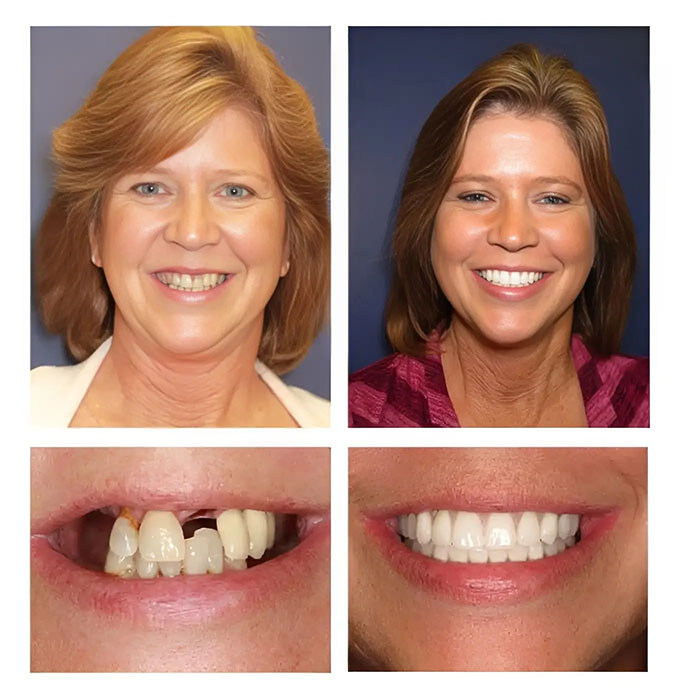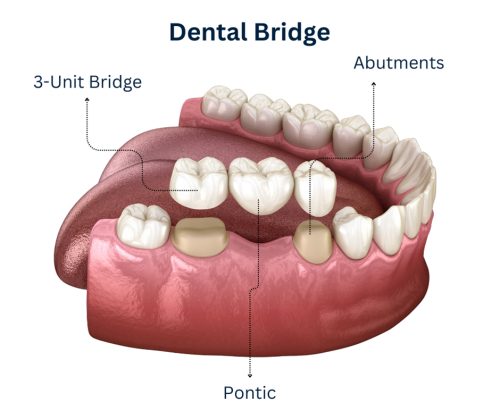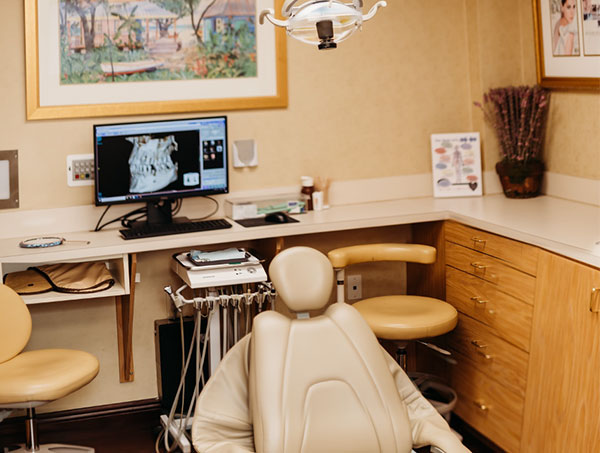Caring for Your New Dental Bridge: Tips from Our Dentist

A radiant, confident smile is more than just a feature—it’s a reflection of your health, self-esteem, and quality of life. For those with missing teeth, dental bridges offer a transformative solution, restoring both function and aesthetics. However, the longevity and success of your dental bridge depend on proper care and maintenance.
As one of South Florida’s premier practices for dental bridges, PGA Dentistry combines cutting-edge technology, IV sedation for anxiety-free experiences, and a compassionate team dedicated to your comfort. Whether you’re dealing with a single tooth gap or multiple missing teeth, our custom dental bridges in Palm Beach Gardens restore function, aesthetics, and oral health. Don’t let tooth loss hold you back—schedule your complimentary consultation today and discover why our patients rave about their life-changing results.
Contact our dentist near you today at (561) 627-8666.
Why Choose PGA Dentistry for Your Dental Bridge in Palm Beach Gardens?

Since 1987, PGA Dentistry has been Palm Beach Gardens’ trusted dental bridge experts. Dr. Jay L. Ajmo, DDS, DABOI, DICOI—one of only 400 worldwide board-certified in implant surgery—brings international acclaim in cosmetic, restorative, and sedation dentistry. As the developer of Teeth Next Day®, Dr. Ajmo has transformed thousands of smiles with his “angelic hands” and compassionate approach.
- “Dr. Ajmo and his team are 1st class. Had a total restoration and couldn’t be any happier with the results. Job well done !!! Thank you” – Craig W.
- “Been 2 years since I had my Restoration and all is good! Still return for regular cleaning and the Team is awesome! Highly recommend PGA Dentistry for anything you may need.” – David D.
Why Dental Bridges Are a Game-Changer

Dental bridges do more than just fill gaps in your smile; they transform your oral health and quality of life. Here’s why investing in a dental bridge and caring for it properly is worth it for many patients:
- Restored Functionality: Missing teeth can make chewing and speaking difficult. A dental bridge restores your ability to eat your favorite foods and communicate clearly.
- Enhanced Aesthetics: A well-crafted bridge blends seamlessly with your natural teeth, boosting your confidence and making your smile shine.
- Prevent Dental Complications: Missing teeth can lead to shifting of adjacent teeth, bite misalignment, and jawbone loss. A bridge stabilizes your dental structure, preventing these issues.
- Long-Lasting Solution: With proper care, dental bridges can last 10 to 15 years or more, making them a cost-effective investment in your oral health.
If dental bridges aren’t right for you, Dr. Ajmo also offers dental implants and dentures. We’ll recommend the best treatment for your oral health needs at your consultation.
How to Care for Your Dental Bridge
-
Practice Excellent Oral Hygiene
Maintaining a dental bridge starts with a solid oral hygiene routine. Just like natural teeth, bridges can accumulate plaque and bacteria, which can lead to gum disease, decay in abutment teeth, or bridge failure.
- Brush Twice Daily: Use a soft-bristled toothbrush and non-abrasive fluoride toothpaste to brush your bridge and surrounding teeth twice a day. Pay special attention to the area where the bridge meets the gums, as plaque can build up here.
- Floss Daily: Flossing is critical for removing food particles and plaque from beneath the pontic and around the abutment teeth. Use a floss threader, interdental brush, or water flosser to clean hard-to-reach areas.
- Consider Mouthwash: Rinsing with a mouthwash can reduce bacteria and keep your gums healthy. Look for alcohol-free options to avoid dryness.
-
Use Specialized Cleaning Tools
Dental bridges require tools designed to clean around and beneath the pontic, where regular brushing and flossing may not suffice.
- Floss Threaders: These tools help guide dental floss under the bridge to clean the space between the pontic and gums.
- Interdental Brushes: Small, cone-shaped brushes are perfect for cleaning tight spaces around the bridge and abutment teeth.
- Water Flossers: These devices use a stream of water to dislodge debris and plaque, offering a gentle yet effective cleaning option.
If you’re ready to replace missing teeth, contact our dental office near you today at (561) 627-8666.
-
Watch Your Diet
What you eat can impact the longevity of your dental bridge. To protect your investment:
- Avoid Hard or Sticky Foods: Chewing on hard candies, ice, or sticky foods like caramel can damage the bridge or dislodge it. Opt for softer, bridge-friendly foods like yogurt, cooked vegetables, and lean proteins.
- Limit Sugary Foods and Drinks: Sugar promotes bacterial growth, which can lead to decay in the abutment teeth or gum disease. Choose water or unsweetened teas over sugary sodas.
- Chew Evenly: Distribute chewing forces evenly across your mouth to avoid putting excessive pressure on the bridge.
-
Protect Your Bridge from Damage
Dental bridges are durable but not indestructible. Remember to take these precautions to prevent damage:
- Avoid Using Your Teeth as Tools: Don’t use your teeth to open packages, crack nuts, or bite your nails, as this can stress the bridge.
- Wear a Mouthguard: If you grind your teeth at night (bruxism) or play contact sports, a custom-fitted mouthguard can protect your bridge and surrounding teeth.
- Quit Smoking: Smoking can stain your bridge, weaken your gums, and increase the risk of oral health issues. If you smoke, consider quitting to protect your bridge and overall health.
-
Visit Our Dentist Regularly
Professional dental care is essential for maintaining your dental bridge. Visit our Palm Beach Gardens dentist every six months for teeth cleanings and exams to:
- Monitor Bridge Condition: Dr. Ajmo will check for signs of wear, looseness, or damage to the bridge.
- Clean Hard-to-Reach Areas: Professional cleanings remove tartar and plaque that at-home care might miss.
- Address Issues Early: Regular checkups can catch problems like gum disease or decay in abutment teeth before they compromise your bridge.
-
Address Issues Promptly
If you notice any problems with your dental bridge—such as looseness, discomfort, or changes in your bite—contact our dentist near you immediately. Delaying treatment can lead to complications, including damage to the bridge or surrounding teeth.
Aftercare Following a Dental Bridge Procedure

After your dental bridge procedure, do the following:
- Take prescribed or over-the-counter pain relievers like ibuprofen to manage mild discomfort or sensitivity, which typically fades within days after your dental bridge placement.
- Apply a cold pack to your cheek for 10 to 15 minutes to reduce swelling, avoiding direct ice to prevent skin irritation.
- Stick to lukewarm foods and drinks for 48 hours to avoid sensitivity to hot or cold temperatures.
- Eat soft foods like yogurt, smoothies, or soups to protect your bridge, avoiding hard, sticky, or sugary items that could cause damage or decay.
- Drink water to stay hydrated and keep your mouth clean, avoiding sugary or alcoholic drinks to reduce infection risk.
- Brush gently with a soft-bristled toothbrush and non-abrasive toothpaste, being careful around the bridge to avoid irritating healing gums.
- Wait 24 to 48 hours before flossing, then use a floss threader or water flosser to clean beneath the pontic.
- Rinse with warm saltwater (1 teaspoon salt in a glass of water) 2 to 3 times daily, starting 24 hours post-procedure, to reduce bacteria and soothe gums.
- Contact our dentist immediately if you notice persistent pain, swelling, a loose bridge, or infection.
- Attend a follow-up visit within 1 to 2 weeks to ensure proper fit and healing for long-term success.
- Avoid chewing on the treated side, smoking, or strenuous exercise for 24 to 48 hours to support a smooth recovery.
Frequently Asked Questions
-
What should I do if my dental bridge feels loose?
A loose bridge requires immediate attention from your dentist. Avoid chewing on the bridge and contact your dental professional to assess and repair it promptly.
-
Is a dental bridge better than a dental implant?
Dental bridges are quicker to place and often less expensive, while dental implants offer greater stability and don’t rely on adjacent teeth. Your dentist can help you decide based on your needs and oral health.
-
Can a dental bridge be whitened?
Dental bridges, especially those made of porcelain or ceramic, cannot be whitened with traditional whitening treatments. To maintain a consistent color, practice good oral hygiene, and avoid staining foods and drinks like coffee, tea, or red wine.
Healthy Teeth from PGA Dentistry
Your dental bridge is more than a restoration—it’s a gateway to a healthier, more confident you. From daily hygiene to mindful eating and regular dental visits, every step you take brings you closer to a lifetime of worry-free smiles.
Whether you’re looking for implant-supported bridges or regular teeth cleanings, trust PGA Dentistry. Contact our dental office near you today at (561) 627-8666.

Complimentary Consultation
or 2nd Opinion
- Exam
- Full mouth X-rays
- Private Consultation with Doctor ($450value)
- 7100 Fairway Dr Ste 59,
Palm Beach Gardens, FL 33418 - (561) 627-8666
- Monday: 8am - 5pm
- Tuesday: 8am - 5pm
- Wednesday: 8am - 5pm
- Thursday: 8am - 5pm
- Friday: 8am - 1pm
- Saturday & Sunday: Closed